WHAT IS IT?
It’s basically just a table of all the subatomic particles that we know of. They’re split into 3 different groups, the quarks, the leptons, and the gauge bosons.
IMPORTANT!
Before I cause mass terror, I feel I must mention that you do actually get a FULL standard model in the IB Physics data booklet. It’s amazing and it makes life so much easier when answering questions in this topic!
QUARKS
- Quarks, leptons and their antiparticles
APPLICATIONS AND SKILLS:
- Describing protons and neutrons in terms of quarks
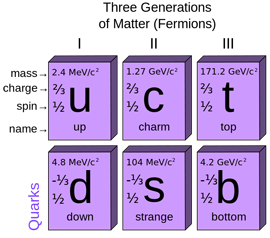
The quarks are a group of 6 different sub atomic particles (called quarks). We have up, down, charm, strange, top and bottom quarks. Up and down are the ones that make up protons and neutrons. The top row of quarks has a charge of +2/3, while the bottom row of quarks have a -1/3 charge
If you look at the diagram above, you can see the charges on the different quarks. A proton is made from 2 up quarks and 1 down quark. The 2 up quarks give a charge of 4/3 and the down quark has a charge of -1/3 which gives the proton a total charge of +1 (3/3).
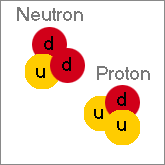
The neutron on the other hand has 2 down quarks and an up quark. The 2 down quarks give a charge of -2/3 and the up quark has a charge of +2/3, so the neutron has a total charge of 0.
LEPTONS
The leptons are another group of 6 sub atomic particles.
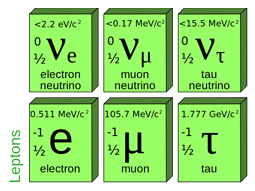
The electron is the most well known of the leptons for it’s role in the atom. The muon and tau are basically heavier and rarer versions of the electron. The electron, muon and tau each have a neutrino. A neutrino is a very small, almost massless particle, that’s mostly involved in beta radioactive decay. Neutrinos have zero charge, while the other leptons all have a charge of -1 like our homie the electron
THE FOUR FUNDAMENTAL FORCES
UNDERSTANDINGS:
- The nature and range of the strong nuclear force, weak nuclear force and electromagnetic force
- Exchange particles
APPLICATIONS AND SKILLS:
- Comparing the interaction strengths of the fundamental forces, including gravity
- Describing the mediation of the fundamental forces through exchange
particles
THE GAUGE BOSONS AND EXCHANGE PARTICLES
Gauge particles and exchange particles are the same thing. They are the particles responsible for the four fundamental forces, which all have different exchange particles.
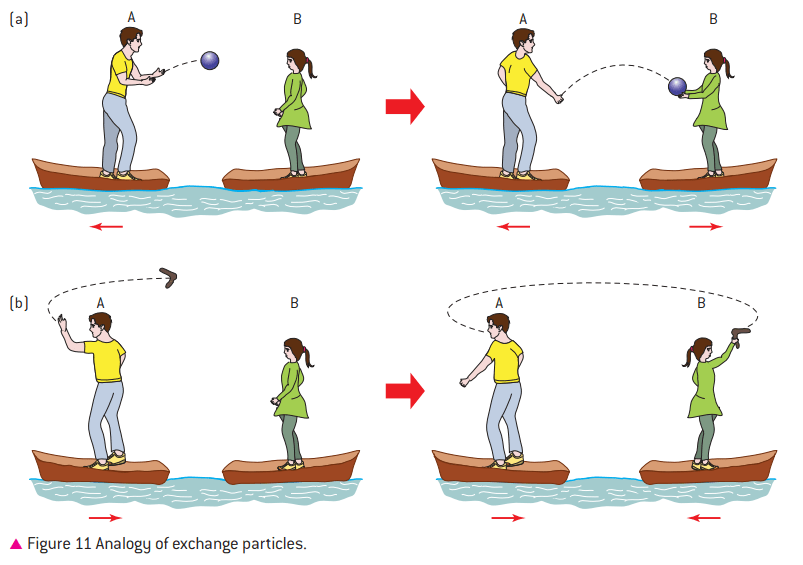
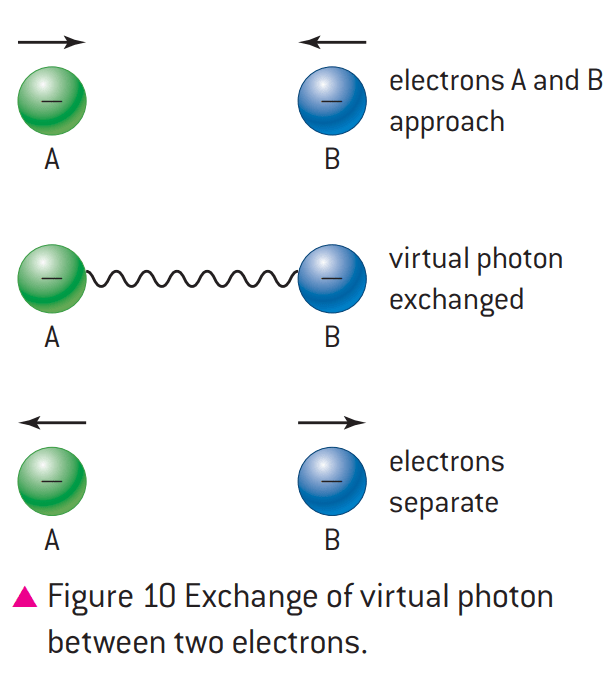
Through the transfer of exchange particles, forces can attract and repel.
THE FORCES
ELECTROMAGNETIC FORCE
The electromagnetic force deals with everything electricity, magnetism and light. Although it has an infinite range, it only acts on matter that carries electrical charge. It’s exchange particle is the photon (the particle of light!).
THE STRONG FORCE
The strong force holds particles together in the nucleus. It may be the strongest of the forces (hence the name), but it only has a range of 10^-15 metres. The exchange particles are called gluons (ugly names)

THE WEAK FORCE
The weak force is the key force that acts in radioactive decay, it allows quarks to change into other quarks in very strange ways. If an up quark changes to a down quark in a proton, it becomes a neutron (think about it) which is one of the key stages in radioactivity. The weak force has 3 different exchange particles, the W+, W- and Z bosons.
THE GRAVITATIONAL FORCE
The gravitational force acts on (you guessed it) mass. It’s the force that keeps planets in orbit. It’s range is, like the electromagnetic force, infinite. The gravitational force is relatively weak though and unless you’re an english teacher, we tend to find that people don’t get attracted to each other simply because they (or we?) don’t have enough mass. The gravitational force’s exchange particle is the theoretical ‘graviton’ which has yet to be discovered.
WHAT DOES THE STANDARD MODEL LOOK LIKE?
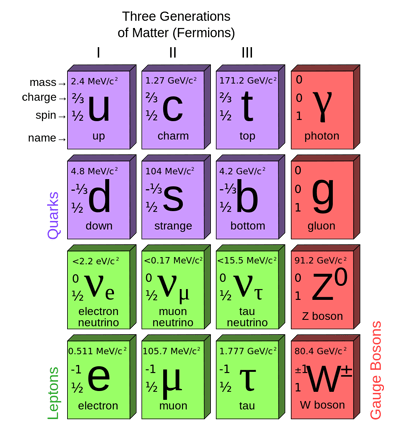
On the top in the purple we have all 6 quarks organised in terms of charge and ‘mass’. Underneath that we have the leptons, neutrinos on the top and the others below, again organised in terms of ‘mass’. Down the side we have the photon, gluon, W and Z bosons. Notice that there isn’t any space in the standard model. This is the challenge that the physicists are working on now at the LHC (Hadron Collider) in Switzerland.
This is actually really useful and straightforward especially compared to the textbooks. Can you please do more IB Physics?
Thanks! I’m working on Topic 3 Thermal Physics right now which will hopefully be out soon.